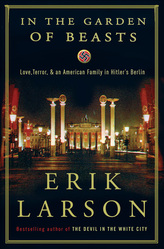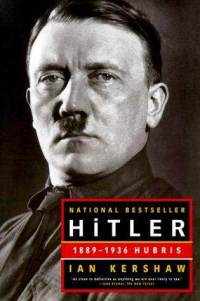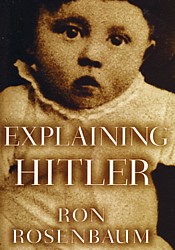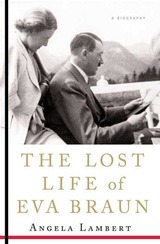|
On this day in 1945, holed up in a bunker under his headquarters in Berlin, Adolf Hitler committed suicide by swallowing a cyanide capsule and shooting himself in the head. His mistress, and wife of one day, Eva Braun, poisoned herself and their dogs as well. Just eight days later, Germany unconditionally surrendered to the Allied forces, ending Hitler's dreams of a "1,000-year" Reich.  In the Garden of Beasts (Erik Larson: 2011) Erik Larson writes nonfiction that reads like the best fiction: vivid, atmospheric page-turners that hold the reader in vise grip until the final paragraph. He's done it again in this mesmerizing portrait of Berlin the early years of Hitler's reign of terror. He paints his picture through the eyes of William Dodd, America's ambassador to Nazi Germany, and his 24-year-old daughter, Martha, who are initially enchanted and then repulsed by what they encounter.  Hitler 1889-1936: Hubris (Ian Kershaw: 2000) Adolf Hitler was a contradiction riddled with self-created myths. Ian Kershaw reveals the character of the bizarre misfit who morphed into a demonic mass murderer over the course of his thirty-year rise from an illegitimate birth in an Austrian village through his early years spent in a Viennese shelter for the indigent to uncontested rule over the German nation that had tried and rejected democracy in the aftermath of World War I. Kershaw brings to life the settings that made Hitler's rise possible: the rabid anti-Semitism of prewar Vienna, the hellish cauldron of World War I, the nationalism that poisoned Bavaria in the 1920s, the extremism that undermined the Weimar Republic, the hysteria that accompanied Hitler's seizure of power in 1933, the shared madness that resulted in brutal attacks on Jews and others condemned as enemies of the Aryan race.  Explaining Hitler: The Search for Origins of His Evil (Ron Rosenbaum: 1999) How does a Hitler happen? Rosenbaum tackles that question and more in this engrossing book full of conversations with and the viewpoints of historians, philosophers, filmmakers, and others who have attempted to make sense of Hitler's actions and find a root cause for the Holocaust. Rosenbaum sifts through the rumors: Hitler's alleged Jewish ancestry and physical deformity (what biographer Alan Bullock calls "the one-ball business") and the attempts to extract some psychological causation factor. We see a variety of Hitlers laid bare: the con man and gangster; the unspeakable pervert, the ladies' man, even the artist whose medium of choice was destruction. But Rosenbaum also examines the examiners to illuminate what an explanation of Hitler tells us about Hitler, about the scholars who attempt to explain, and about ourselves.  The Lost Life of Eva Braun (Angela Lambert: 2008) What sort of woman loves a monster? Eva Braun left convent school at the age of seventeen and met Hitler a few months later in a camera store. She became his mistress before she turned twenty and remained so for 13 years until their joint suicides at the end of the war. Hitler humiliated her in public and she was mocked by the wives of his Nazi officials. Albert Speer described her as "very shy, modest. A man’s woman: gay, gentle, and kind; incredibly undemanding . . . a restful sort of girl.” Who was Eva Braun? Lambert's biography, only the second examination of the life of Eva Braun written in English, focuses a spotlight on the young woman who lived her life in the cold heart of the Nazi regime.
0 Comments
|
AuthorTo find out more about me, click on the Not Your Average Jo tab. Archives
February 2024
Categories
All
|
 RSS Feed
RSS Feed